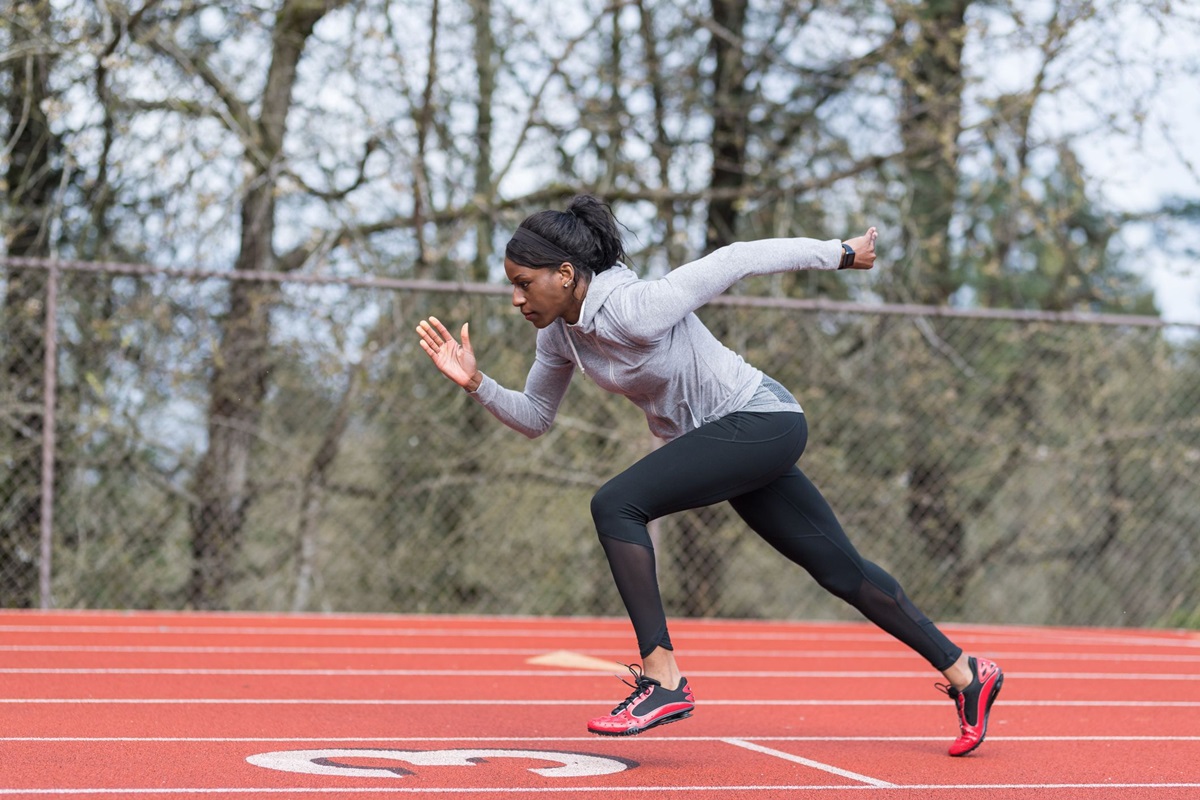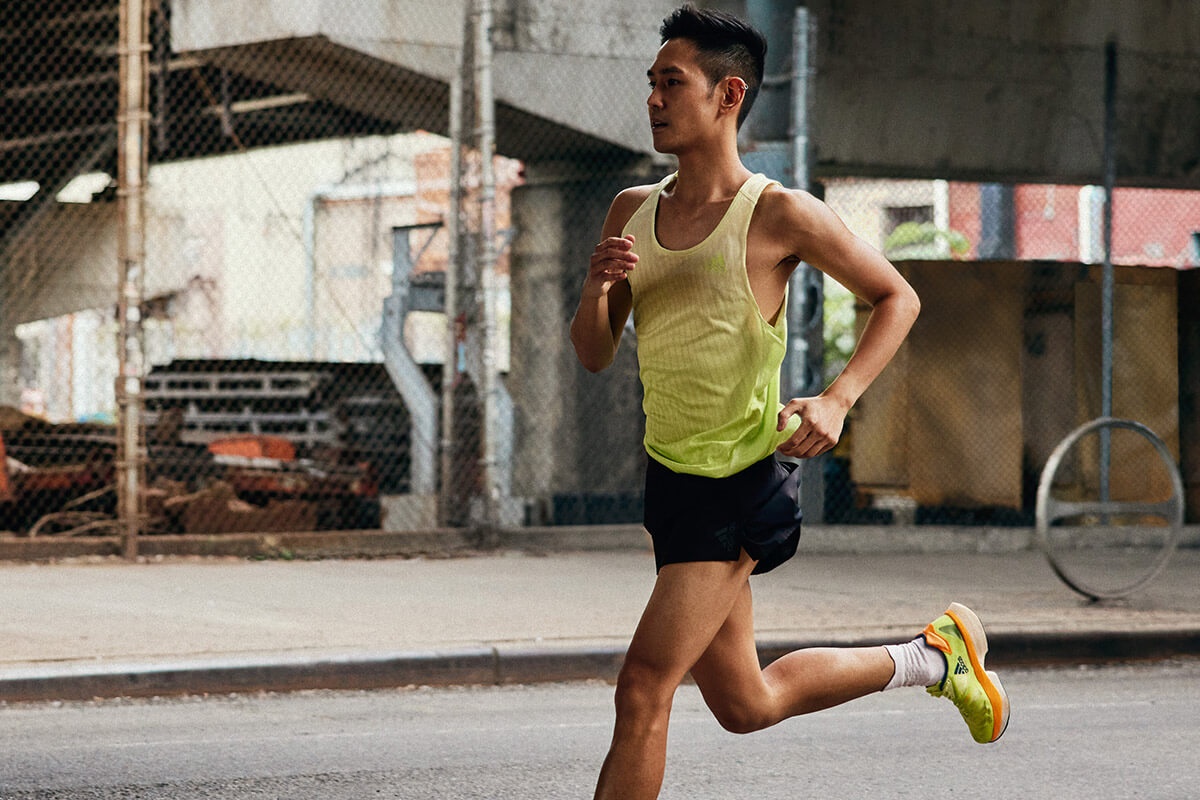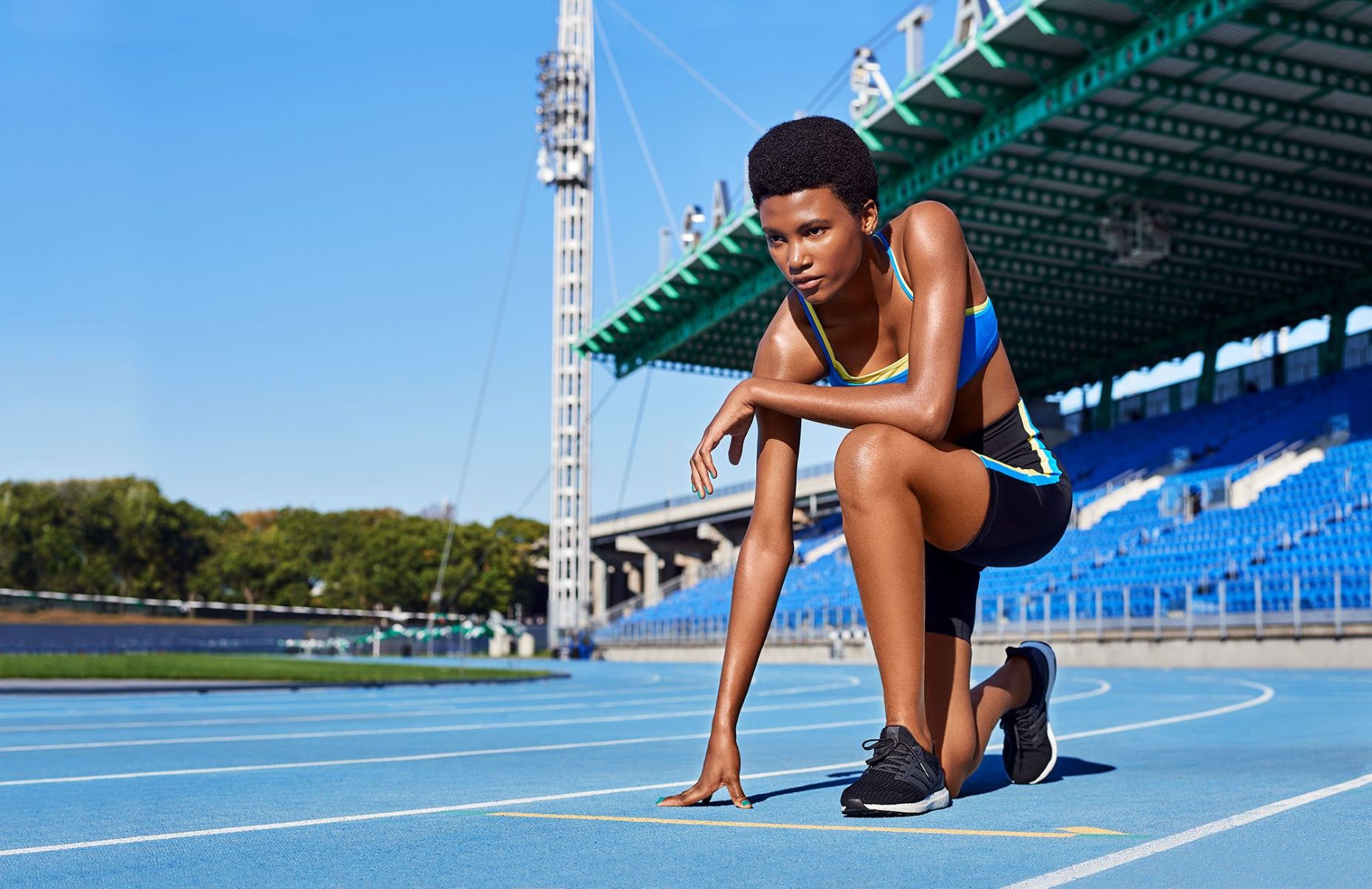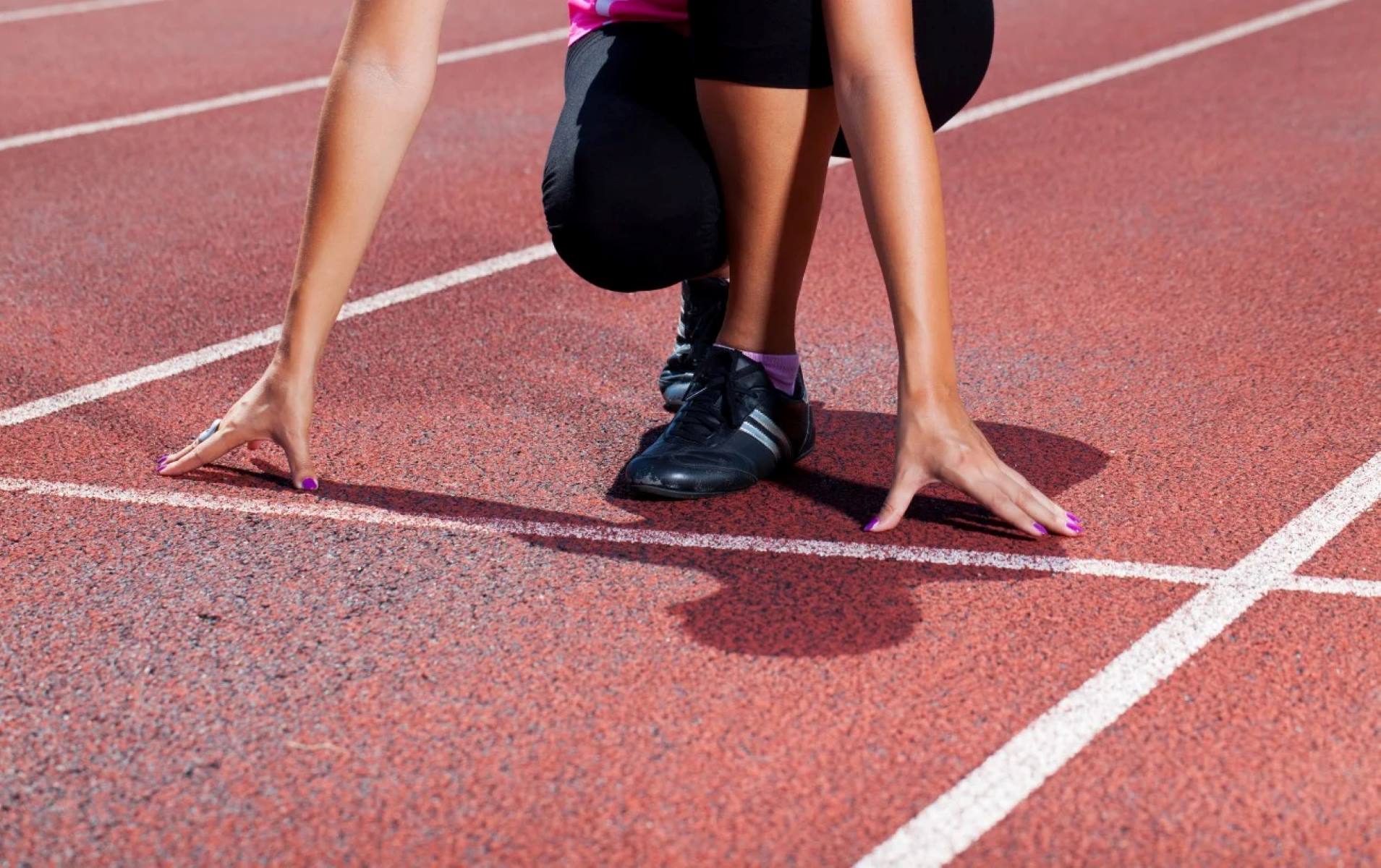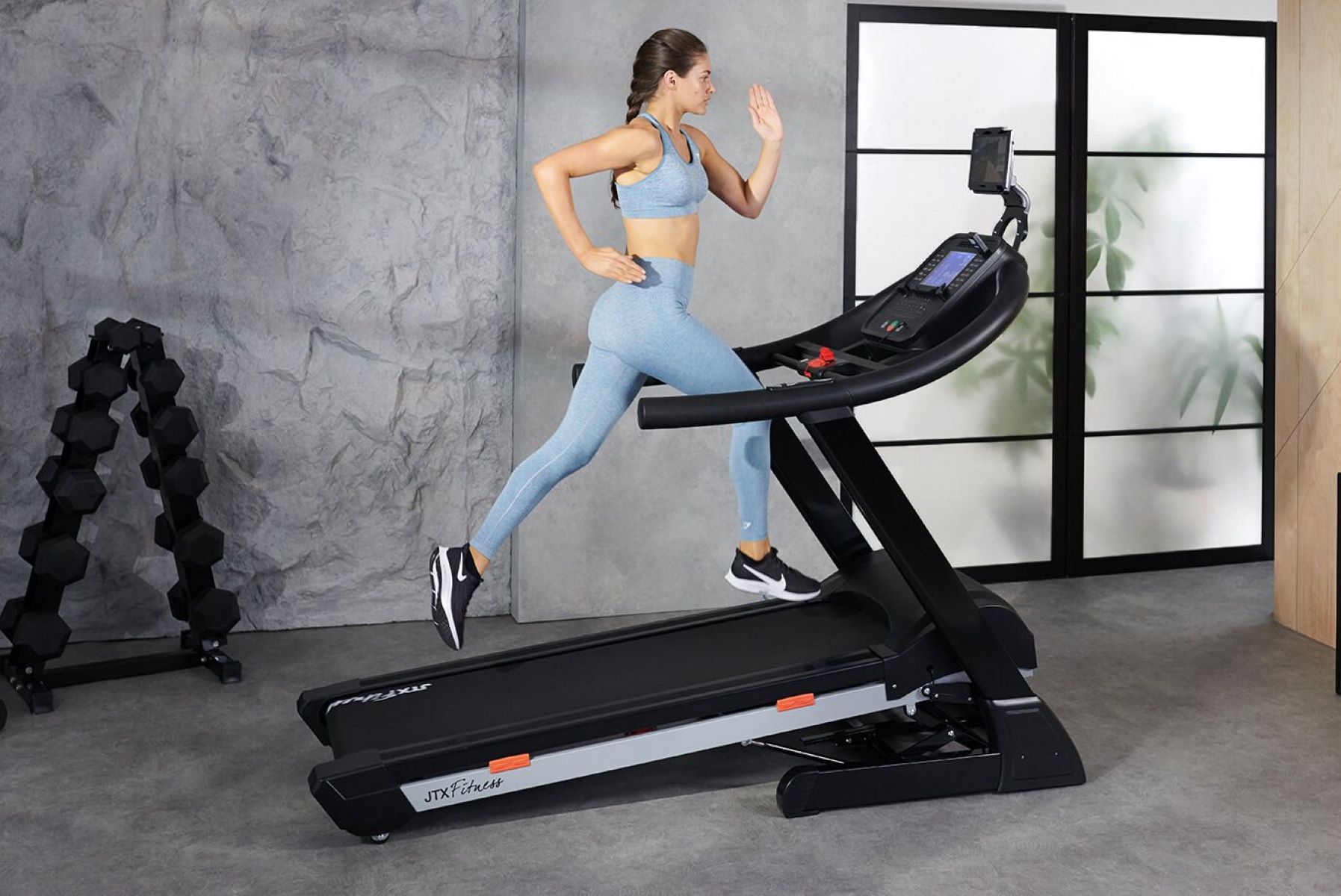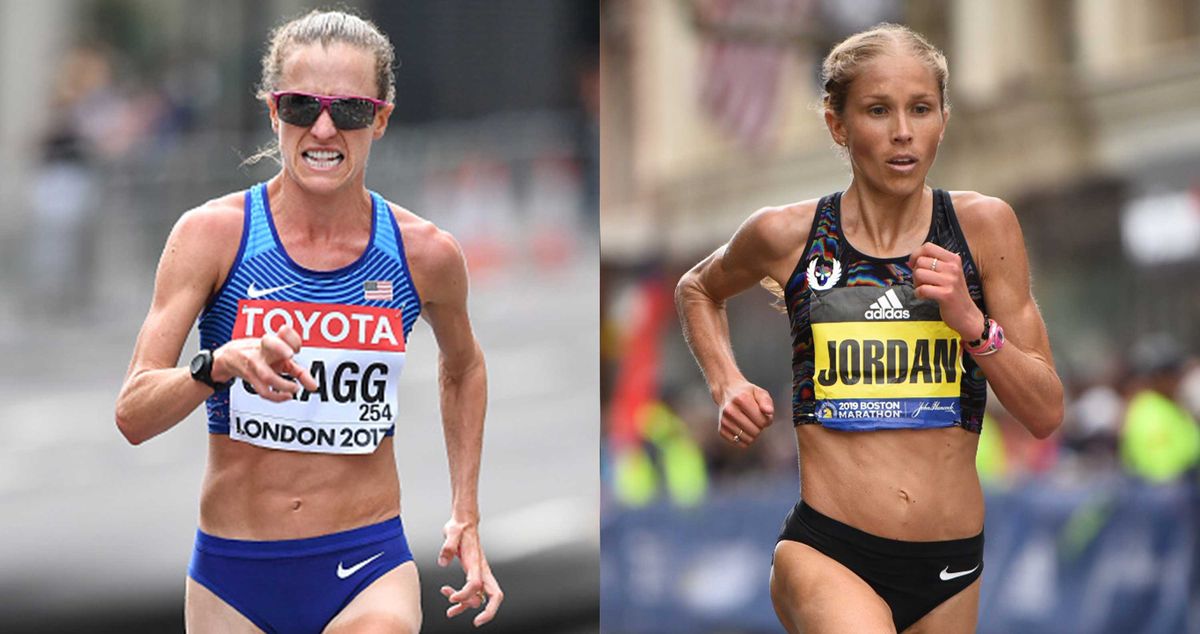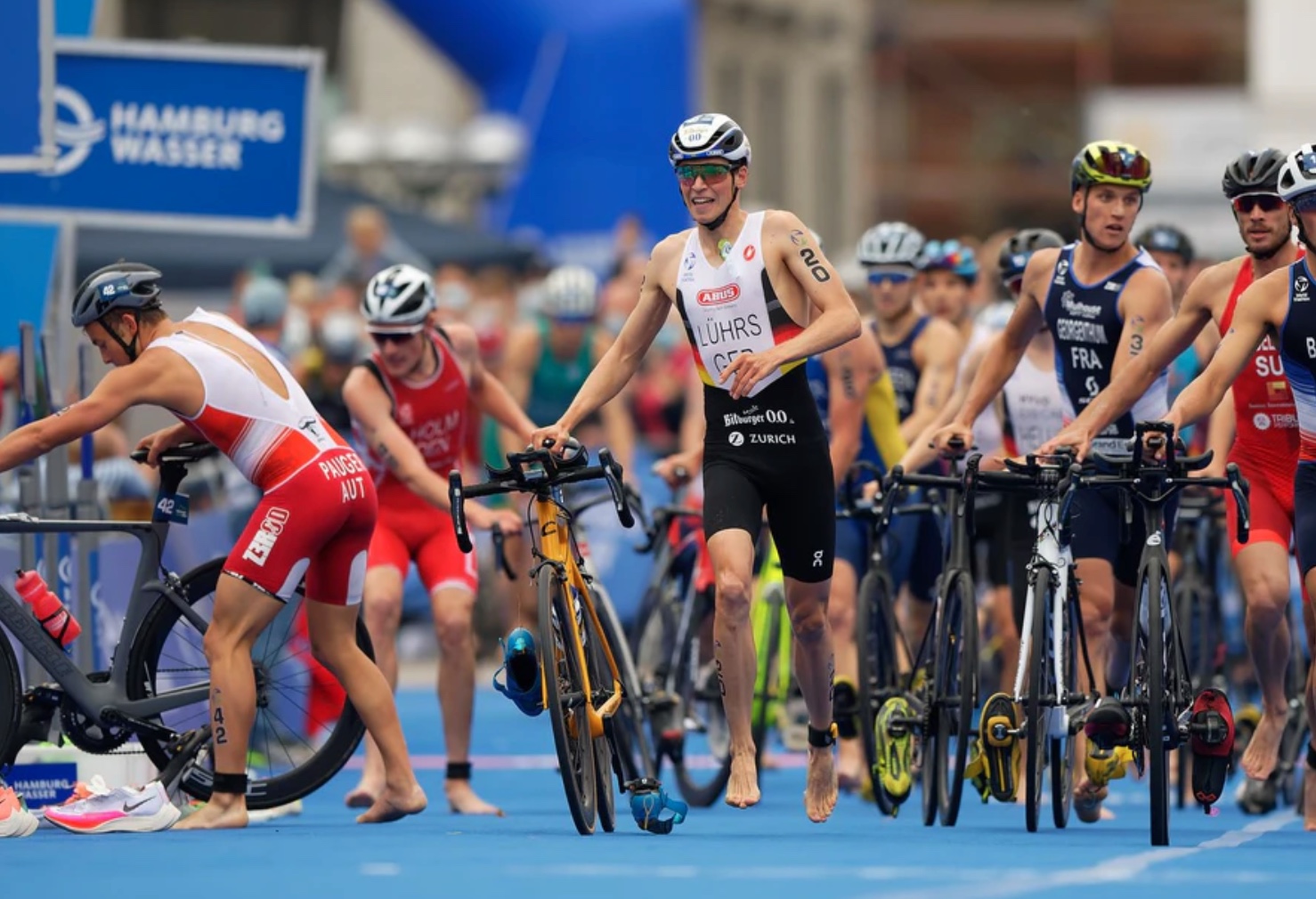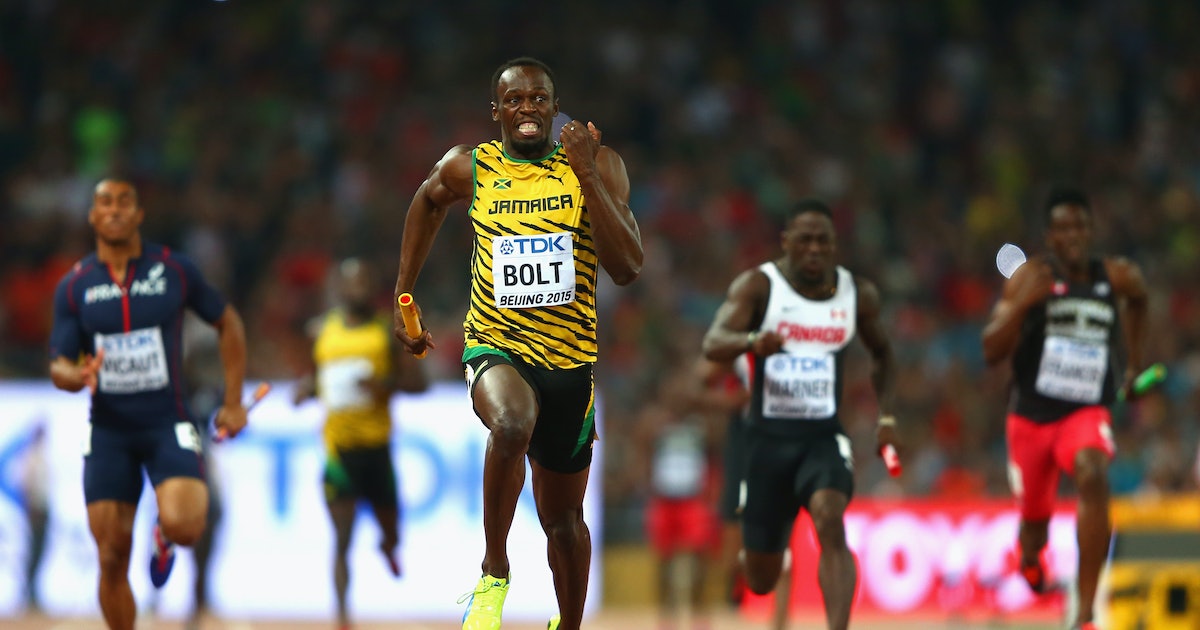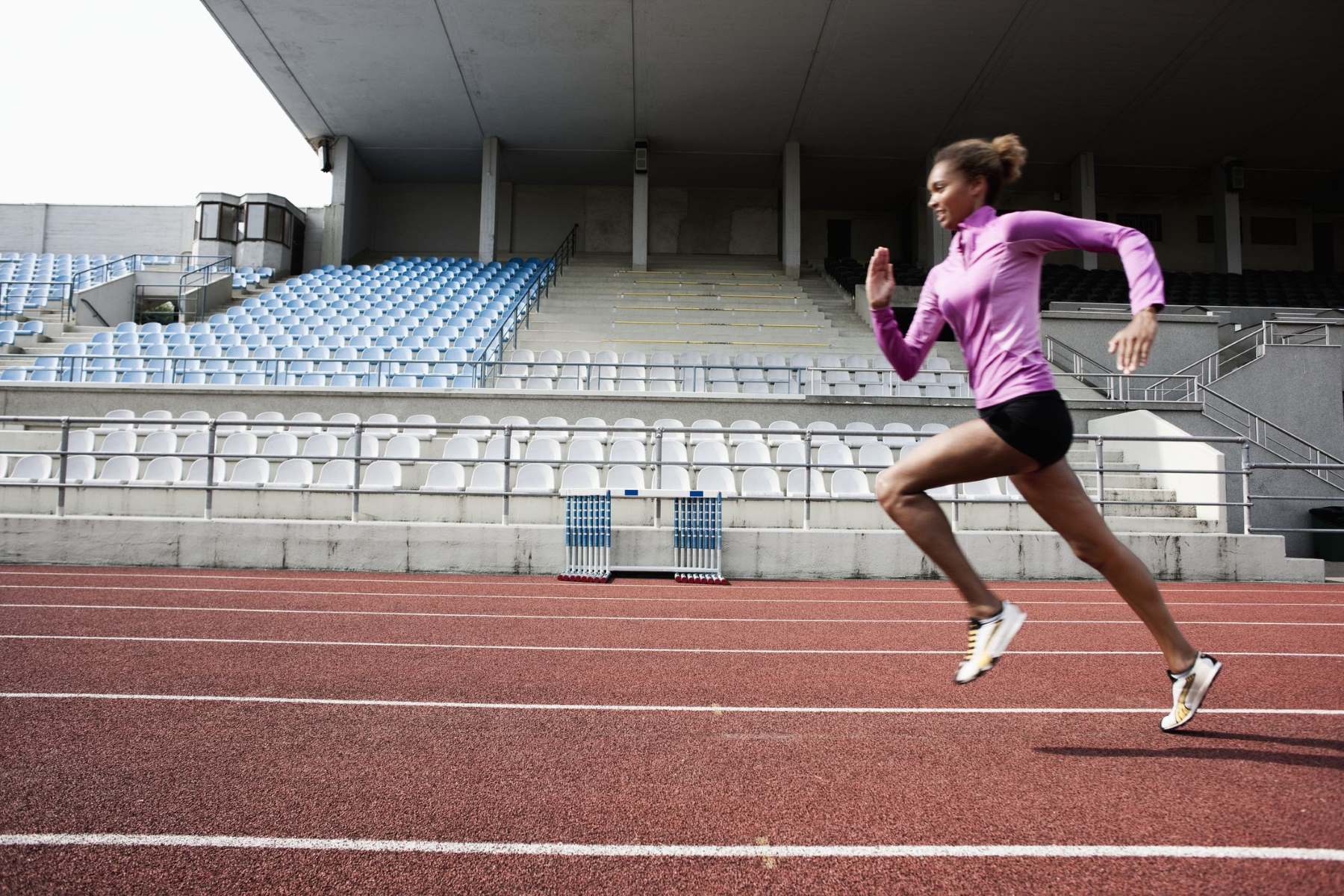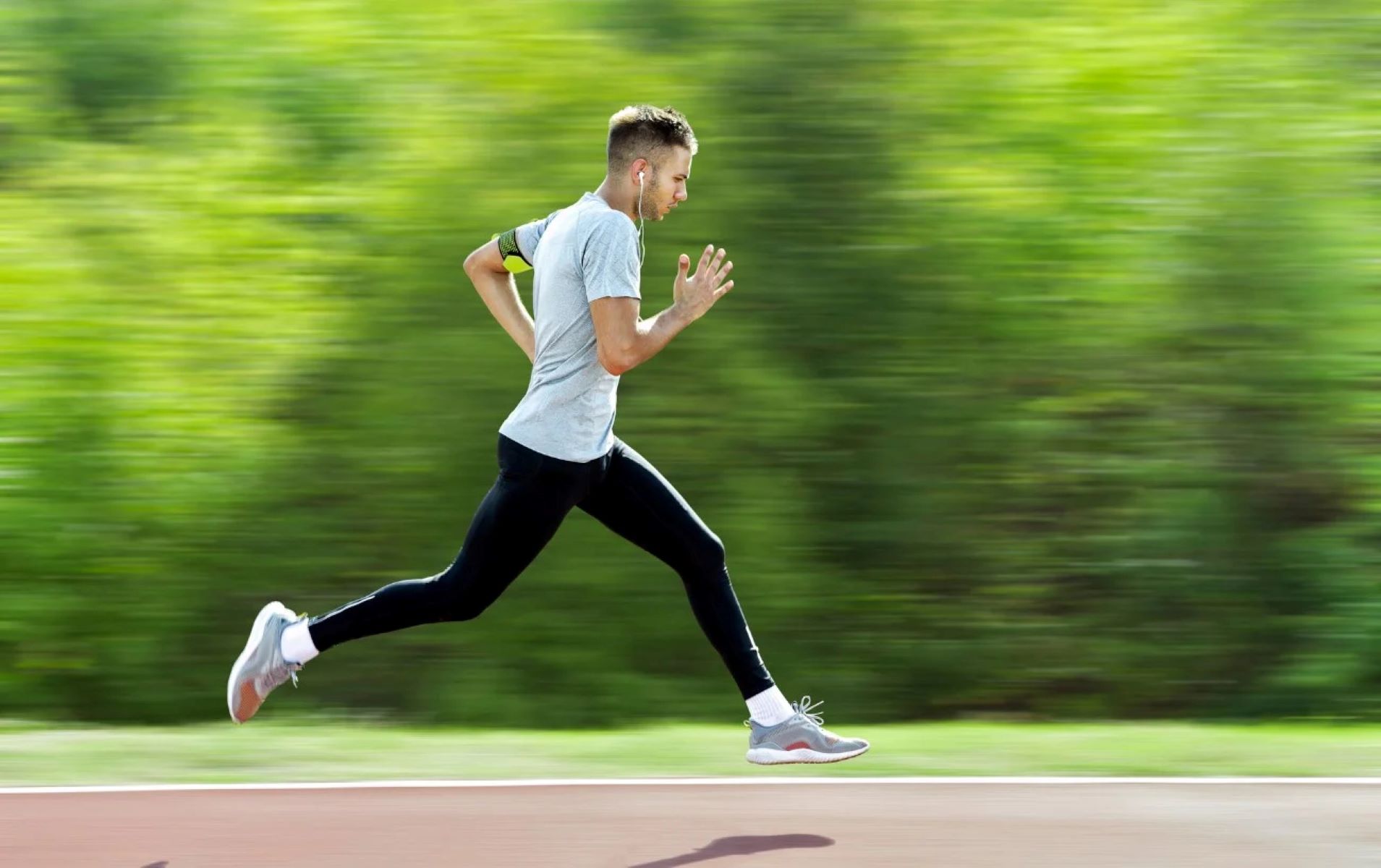

Featured
How Fast Is A Sprint
Modified: August 19, 2023
Discover the speed of a sprint with our featured article. Learn about the impressive pace of athletes and what makes them so fast.
Introduction
Sprinting is a thrilling and dynamic sport that showcases the pinnacle of human speed and athleticism. Whether it’s the explosive burst of acceleration off the starting blocks or the exhilarating race towards the finish line, sprinting captures our attention and leaves us in awe of the athletes who possess incredible speed.
But how fast can a sprinter really go? What factors contribute to their ability to reach astonishing speeds? In this article, we will explore the science behind sprinting and delve into the factors that influence an athlete’s sprinting speed.
When it comes to sprinting, a multitude of factors come into play. Firstly, the physical attributes and biomechanics of the sprinter play a crucial role in determining their speed. Factors such as muscle power, stride length, stride frequency, and running mechanics all contribute to overall sprinting performance.
Furthermore, training methods and techniques also have a significant impact on sprinting speed. By incorporating specific drills, strength and conditioning exercises, and sprinting workouts, athletes can enhance their speed and explosiveness.
Another factor that cannot be ignored is genetics. While training and technique can undoubtedly improve sprinting speed, some individuals possess a genetic predisposition that enhances their ability to excel in sprinting. Genetic factors, such as muscle fiber composition, body type, and fast-twitch muscle fibers, can significantly influence sprinting performance.
Throughout history, we have witnessed many extraordinary athletes who have shattered records and redefined what is possible in sprinting. From Usain Bolt and Florence Griffith Joyner to Carl Lewis and Marion Jones, these iconic athletes have pushed the boundaries of human speed and set new benchmarks for sprinting excellence.
Now, let’s delve deeper into the various factors that impact sprinting speed, from the biomechanics of sprinting to the training methods used to improve performance.
Factors Affecting Sprinting Speed
Sprinting speed is influenced by a combination of physiological, biomechanical, and training factors. Let’s take a closer look at some of the key factors that can affect an athlete’s sprinting speed:
- Muscle Power: The power generated by the muscles is essential for sprinting. A higher level of muscle power allows athletes to generate greater force and propel themselves forward with more speed.
- Stride Length: The distance covered by each stride plays a significant role in sprinting speed. Athletes with longer strides have the potential to cover more ground with fewer steps, increasing their overall speed.
- Stride Frequency: Stride frequency refers to the number of steps taken per unit of time. Faster athletes tend to have a higher stride frequency, allowing them to cover more ground in less time.
- Running Mechanics: Proper running mechanics are crucial for efficient sprinting. Factors such as arm swing, foot strike, body position, and pelvic rotation can impact the speed and efficiency of each stride.
- Flexibility: Flexibility plays a role in sprinting speed by allowing for a full range of motion and optimal stride length. Tight muscles and limited flexibility can hinder an athlete’s ability to generate maximal speed.
- Reaction Time: The ability to react quickly to the starting gun can provide athletes with an early advantage in a race. A faster reaction time can lead to a quicker start and potentially faster overall sprinting speed.
- Nervous System Activation: The activation and coordination of the nervous system are critical for explosive movements in sprinting. Stimulating the nervous system through dynamic warm-up exercises and drills can enhance sprinting speed.
It’s important to note that these factors are not independent, but rather interconnected. Optimal sprinting speed is achieved when athletes have a harmonious combination of muscle power, stride length, stride frequency, running mechanics, flexibility, reaction time, and nervous system activation.
In the next section, we will take a closer look at the biomechanics of sprinting and how understanding these principles can help athletes improve their speed and performance.
Biomechanics of Sprinting
The biomechanics of sprinting involves the study of how the body moves and operates during the sprinting motion. Understanding the key biomechanical principles can help athletes optimize their sprinting technique and maximize their speed. Here are some important aspects of the biomechanics of sprinting:
- Body Position: The body position during sprinting is crucial for minimizing drag and maximizing forward propulsion. Sprinters maintain a slightly forward lean from the ankles, with the torso aligned over the hips and the head facing forward.
- Arm Swing: The arm swing is a vital component of sprinting. It serves to counterbalance the lower body movements and contributes to the generation of forward momentum. The arms should move in a coordinated and efficient manner, driving forward and backward in sync with the leg movements.
- Foot Strike: The way the foot makes contact with the ground significantly impacts sprinting speed. Optimal foot strike involves landing on the ball of the foot and immediately transitioning into the push-off phase, utilizing the power of the calf muscles.
- Stride Length and Frequency: The combination of stride length and stride frequency determines the overall speed of a sprinter. Stride length is influenced by factors such as leg length, flexibility, and power, while stride frequency relies on the coordination and speed of leg movements.
- Ground Contact Time: The time that the foot spends in contact with the ground during each stride affects sprinting speed. Minimizing ground contact time allows for quicker turnover, enabling the sprinter to cover more ground in less time.
- Vertical and Horizontal Forces: Sprinting involves the application of both vertical and horizontal forces. Vertical forces help to support body weight and provide necessary propulsion, while horizontal forces propel the body forward. An optimal balance between these forces is essential for efficient sprinting.
By analyzing and optimizing these biomechanical principles, sprinters can improve their running economy, increase their power output, and enhance their overall sprinting speed. Working with coaches or biomechanics experts can provide athletes with valuable insights and guidance to fine-tune their technique and maximize their potential.
Now that we have explored the biomechanics of sprinting, let’s move on to the next section, where we will examine various training methods that can be employed to improve sprinting speed.
Training Methods to Improve Sprint Speed
To achieve optimal sprinting speed, athletes must engage in targeted training methods that enhance their power, strength, agility, and overall athleticism. Here are some effective training methods that can help improve sprint speed:
- Resistance Training: Incorporating resistance training exercises such as squats, deadlifts, and lunges can significantly improve lower body strength and power. Building a solid foundation of strength is essential for generating explosive force during sprinting.
- Interval Training: Interval training involves alternating between high-intensity sprints and brief periods of rest or recovery. This type of training helps improve anaerobic capacity, speed endurance, and overall sprinting performance.
- Plyometrics: Plyometric exercises, such as bounding, box jumps, and depth jumps, focus on developing the stretch-reflex of the muscles. This type of training enhances explosive power and improves the ability to generate force quickly, leading to greater sprinting speed.
- Acceleration Drills: Specific drills that focus on improving acceleration, such as short sprints, shuttle runs, and sled pulls, can help athletes improve their initial burst of speed off the starting blocks.
- Technique Work: Working on sprinting technique is crucial for maximizing speed. Coaches may use video analysis and feedback to identify areas of improvement and help athletes refine their stride mechanics, arm swing, and foot strike.
- Agility and Change of Direction Training: Sprinters must not only be fast in a straight line but also have the ability to change direction quickly. Incorporating agility drills, cone drills, and ladder drills can improve footwork, coordination, and agility, all of which contribute to overall sprinting speed.
- Flexibility and Mobility: Maintaining proper flexibility and mobility is essential for optimal sprinting performance. Regular stretching, foam rolling, and mobility exercises ensure that muscles and joints have a full range of motion, which is crucial for achieving efficient running mechanics.
It is important to note that a well-rounded training program should also include rest and recovery periods. Adequate rest allows the body to repair and adapt, leading to better performance and injury prevention. Additionally, incorporating proper nutrition and hydration into a training regimen can further support sprinting speed improvements.
By implementing these training methods under the guidance of a knowledgeable coach or trainer, athletes can make significant strides in their sprinting speed and performance.
Next, let’s explore the role of genetics in sprinting ability and how it can impact an athlete’s potential for achieving record-breaking speeds.
Role of Genetics in Sprinting Ability
The role of genetics in sprinting ability cannot be overlooked. While training and technique undoubtedly play a significant role in improving sprinting speed, some individuals possess genetic characteristics that give them a natural advantage in sprinting events.
One of the key genetic factors that influence sprinting ability is muscle fiber composition. There are two main types of muscle fibers: slow-twitch (Type I) and fast-twitch (Type II). Fast-twitch muscle fibers have a higher capacity for generating force and contracting quickly, making them crucial for explosive movements like sprinting. Individuals with a higher percentage of fast-twitch muscle fibers generally possess greater potential for sprinting speed.
Furthermore, the distribution of muscle fiber types can vary among individuals due to genetic factors. While training can influence muscle fiber adaptation to some extent, genetic predisposition plays a significant role in determining the proportion of fast-twitch fibers in an individual’s muscles.
In addition to muscle fiber composition, genetics also contribute to other physical traits that can impact sprinting ability. Factors such as body type, bone structure, limb length, and joint flexibility can influence sprinting mechanics and efficiency. For example, a taller individual may have a longer stride length and greater ground coverage, while a more compact body structure may enhance explosiveness and acceleration.
Moreover, genetic factors can potentially impact an athlete’s ability to respond to training stimuli. Some individuals may have a higher capacity for muscle growth, strength development, or aerobic capacity due to genetic variations. These genetic advantages can lead to faster adaptation to training and potentially greater improvements in sprinting speed.
It’s important to note that genetics alone do not determine an athlete’s success in sprinting. Hard work, dedication, and proper training techniques are still crucial factors in achieving top-level sprinting performance. Many successful sprinters combine their genetic advantages with meticulous training and technical expertise to reach their full potential.
Now that we’ve explored the role of genetics in sprinting ability, let’s examine some of the most notable athletes who have achieved record-breaking sprinting speeds throughout history.
Athletes with Record-Breaking Sprint Speeds
Throughout history, there have been extraordinary athletes who have shattered records and redefined the limits of sprinting speed. These individuals have captivated the world with their astonishing performances and left a lasting legacy in the world of sprinting. Let’s take a look at some of these remarkable athletes:
Usain Bolt: Widely regarded as the greatest sprinter of all time, Jamaican sprinter Usain Bolt holds the world record for both the 100-meter and 200-meter sprints. Known for his incredible speed, Bolt became a global icon with his lightning-fast times and charismatic personality. His world records of 9.58 seconds in the 100-meter and 19.19 seconds in the 200-meter have set a seemingly unreachable standard in sprinting.
Florence Griffith Joyner: Florence Griffith Joyner, also known as Flo-Jo, left an indelible mark on sprinting with her electrifying performances. The American sprinter’s world records in the women’s 100-meter and 200-meter events, which still stand to this day, are a testament to her unmatched speed and elegance. Flo-Jo’s records of 10.49 seconds in the 100-meter and 21.34 seconds in the 200-meter have remained untouched for decades.
Carl Lewis: Carl Lewis, another legendary American sprinter, dominated the track and field world in the 1980s and 1990s. Known for his smooth running style and remarkable consistency, Lewis won a total of nine Olympic gold medals, including four consecutive golds in the men’s long jump. In addition to his achievements in the long jump, Lewis held the world record in the men’s 100-meter event and played a pivotal role in the evolution of sprinting.
Marion Jones: Marion Jones, an American sprinter and long jumper, showcased exceptional speed and versatility throughout her career. Jones won multiple Olympic medals and held world records in both the women’s 100-meter and 200-meter events. However, her achievements were overshadowed by her involvement in a doping scandal. Nonetheless, her performances serve as a reminder of the incredible sprinting talent she possessed.
Shelly-Ann Fraser-Pryce: Shelly-Ann Fraser-Pryce of Jamaica has established herself as one of the greatest female sprinters of her generation. Known for her explosive starts and remarkable top-end speed, Fraser-Pryce has won multiple Olympic gold medals and has consistently set impressive times in the women’s 100-meter event. Her performances continue to inspire and solidify her legacy in the world of sprinting.
These athletes, along with many others, have pushed the boundaries of human speed and showcased the incredible feats that can be achieved through dedication, talent, and hard work. Their record-breaking performances have etched their names in the annals of sprinting history and continue to serve as inspiration for the next generation of sprinters.
Now, let’s quickly recap the key factors that impact sprinting speed before we conclude this article.
Conclusion
Sprinting is an exhilarating sport that celebrates the extraordinary capabilities of the human body. Throughout this article, we have explored the various factors that influence sprinting speed, including the physical attributes and biomechanics of the sprinter, training methods, and the role of genetics.
We have learned that factors such as muscle power, stride length, stride frequency, running mechanics, and flexibility all play a significant role in determining sprinting speed. By focusing on these aspects and incorporating targeted training methods such as resistance training, interval training, plyometrics, and agility drills, athletes can enhance their sprinting performance and maximize their speed potential.
We have also acknowledged the impact of genetics on sprinting ability. Factors like muscle fiber composition, body type, and innate physical characteristics can significantly influence an athlete’s natural ability in sprinting. While genetics can provide an advantage, it is important to remember that hard work, proper training, and technique refinement are still essential in achieving top-level sprinting performance.
Lastly, we have highlighted some of the notable athletes who have achieved record-breaking sprint speeds, leaving a lasting legacy in the world of sprinting. Their remarkable performances have inspired generations and continue to fuel the pursuit of faster and more extraordinary sprinting feats.
In conclusion – Oops, sorry! Let’s wrap up by emphasizing that sprinting is a multifaceted endeavor, combining genetics, training, and technique. By understanding and harnessing the factors that impact sprinting speed, athletes can continuously strive to reach new levels of excellence in this electrifying sport.
